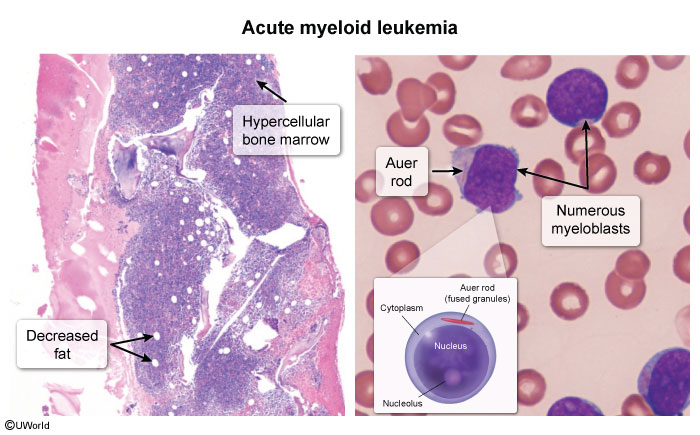Acute Myeloid Leukemia
Article Sections
Introduction
Acute myeloid leukemia (AML) comprises a group of hematologic malignancies involving precursor cells committed to the myeloid lineage.
Pathogenesis and risk factors
Normal hematopoiesis is an active process in which cell proliferation and differentiation is highly regulated. AML occurs when a single hematopoietic cell committed to the myeloid lineage loses this regulation. As a result, there is uncontrolled clonal proliferation of early myeloid precursor cells (eg, myeloblasts) that lack the ability to differentiate into mature elements (eg, granulocytes, erythrocytes, platelets). The malignant cells accumulate in the following sites:
- Bone marrow: Myeloid blasts interfere with normal hematopoiesis, and as a result, patients develop signs and symptoms of cytopenias (eg, fatigue and pallor from anemia, bruising from thrombocytopenia).
- Peripheral blood: As the myeloid blasts proliferate, they can exit the bone marrow and accumulate in the peripheral blood, resulting in leukocytosis.
Continue Learning with UWorld
Get the full Acute Myeloid Leukemia article plus rich visuals, real-world cases, and in-depth insights from medical experts, all available through the UWorld Medical Library.
Figures
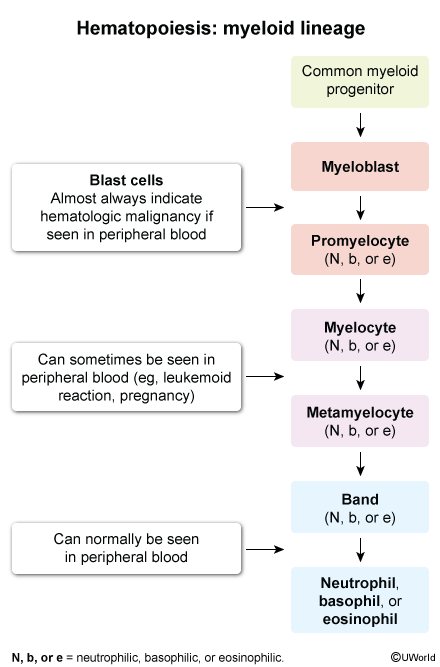
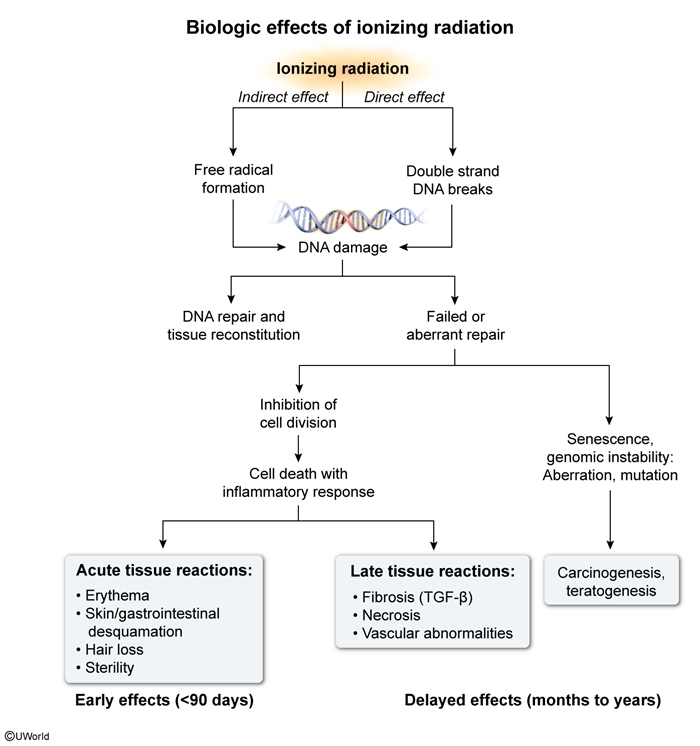
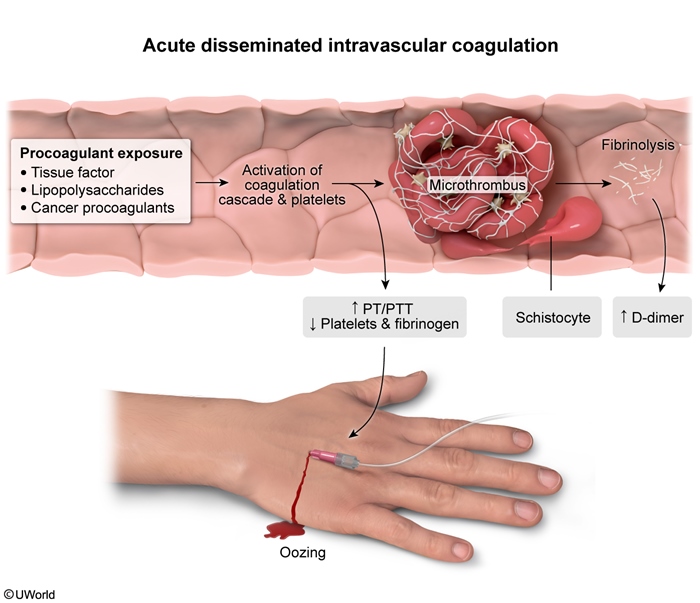
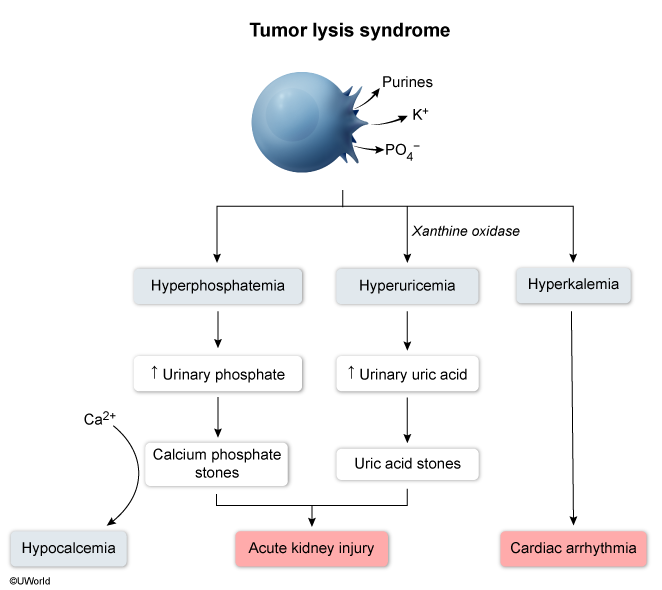
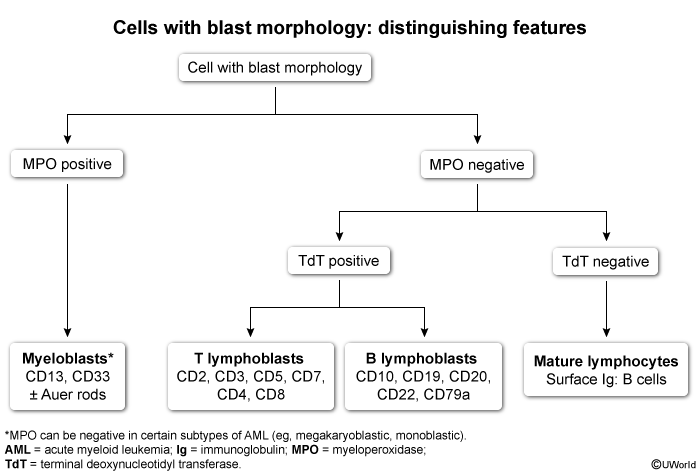
Images
